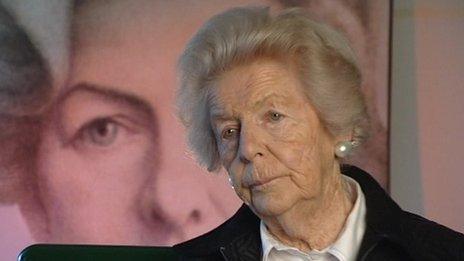Dowager Duchess of Devonshire drove Chatsworth House success
- Published
.jpg)
The Dowager Duchess of Devonshire turned her home Chatsworth House into a profitable business
The Dowager Duchess of Devonshire, who has died aged 94, was seen as the driving force behind making Derbyshire's Chatsworth House one of the nation's most popular stately homes.
But when she and her husband first inherited the family seat they faced a huge tax bill and a far from certain future.
Here, the BBC examines the history behind one of Britain's most popular tourist destinations and how the "housewife duchess" made Chatsworth House an international business.
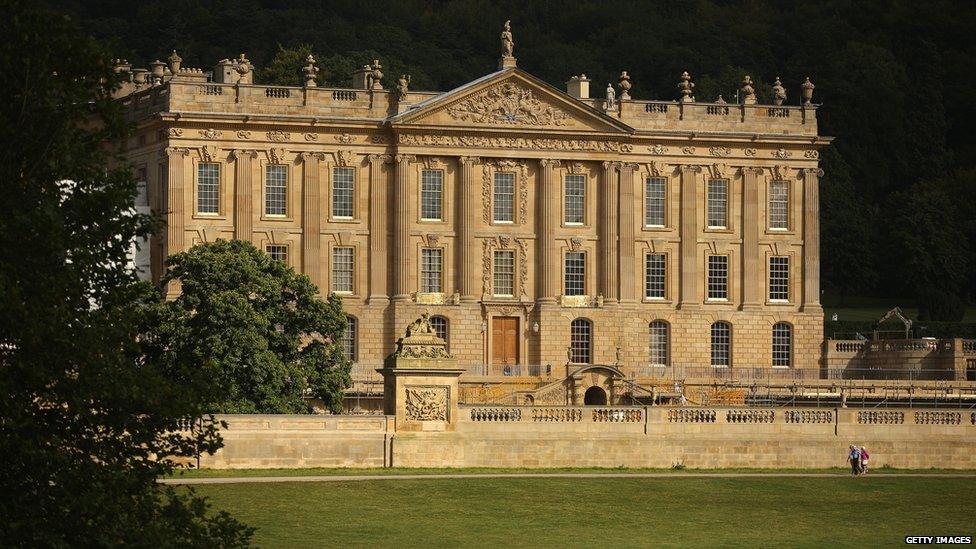
It started with another powerful woman, Bess of Hardwick, who was second only to Queen Elizabeth I in wealth and influence during her 16th Century lifetime.
With her second husband, Sir William Cavendish, she built the first house at Chatsworth, a building which would later imprison Mary Queen of Scots.
During the English Civil War both sides occupied, and damaged, the family home and the then Earl of Devonshire did not return to Derbyshire until after the restoration of the monarchy.
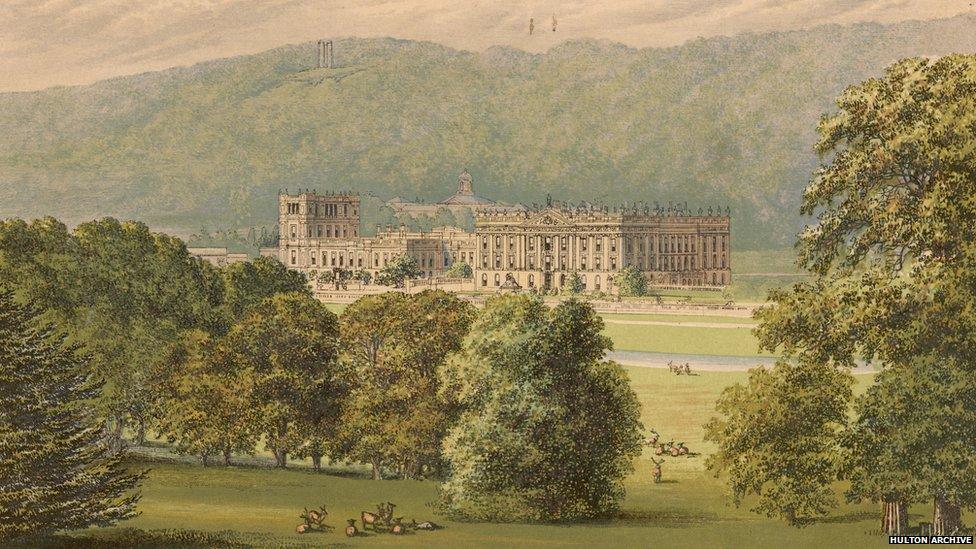
The house was redesigned at the start of the 18th Century and today the views are as spectacular as in this 1850 painting
The fourth Earl, who was made the first Duke after helping William of Orange ascend to the throne in 1689, had to restore much of the building and radically altered Chatsworth at the turn of the 18th Century, creating most of the current imposing building.
Not long afterwards, renowned landscape gardener Lancelot "Capability" Brown was employed, creating sweeping views with his trademark rural look which can still be seen today.
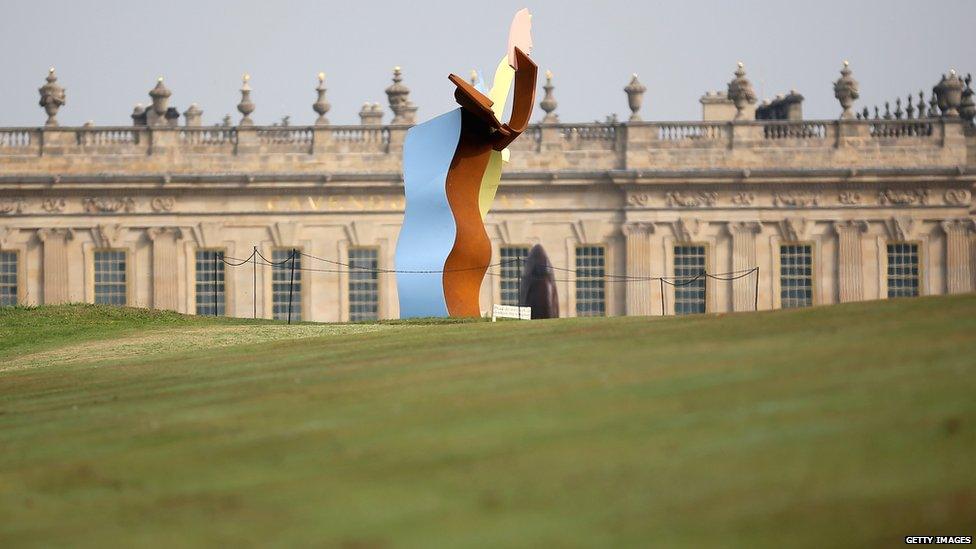
The formal gardens were replaced by Capability Brown with sweeping views which today form the backdrop to regular sculpture displays
The house was not without scandal and at the start of the 19th Century, the fifth Duke was living with his wife Lady Georgiana Spencer and his lover Lady Elizabeth Foster, whom he later married.
Arguably the biggest change came in the 20th Century when the family first paid death duties and assets had to be sold off.
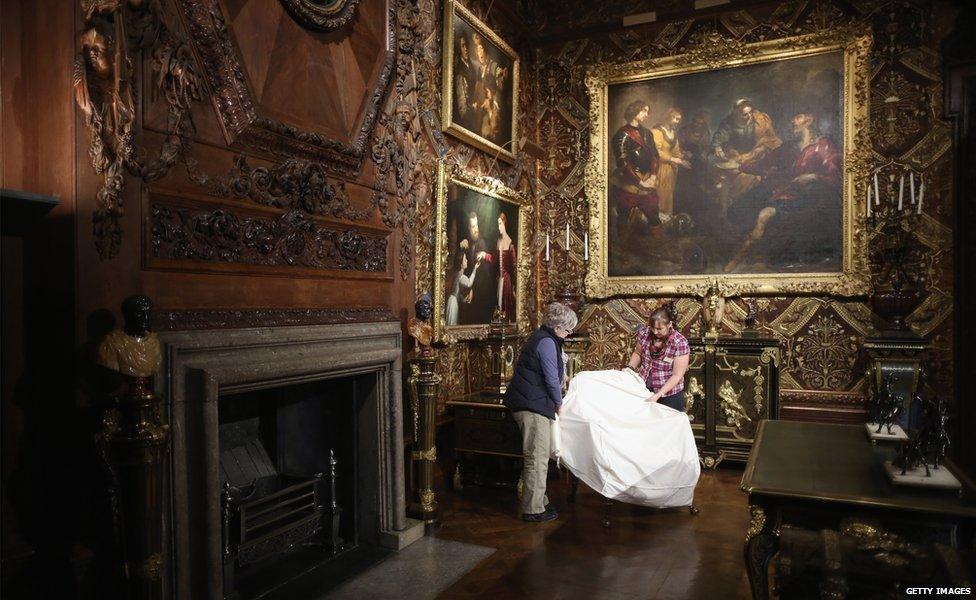
The family amassed a huge art collection and, despite several sales to pay off debts, Chatsworth House is home to one of the most important collections in the UK - all of which needs cleaning
During World War Two, it was home to Penrhos College, a Welsh girls' boarding school, but in 1949 the building reopened to the public and 105,000 people visited in the first year.
But the sudden death of Edward Cavendish, the 10th Duke, in 1950 left the Dowager Duchess, newly married to Andrew Cavendish and titled the Duchess of Devonshire, with a huge Treasury bill.
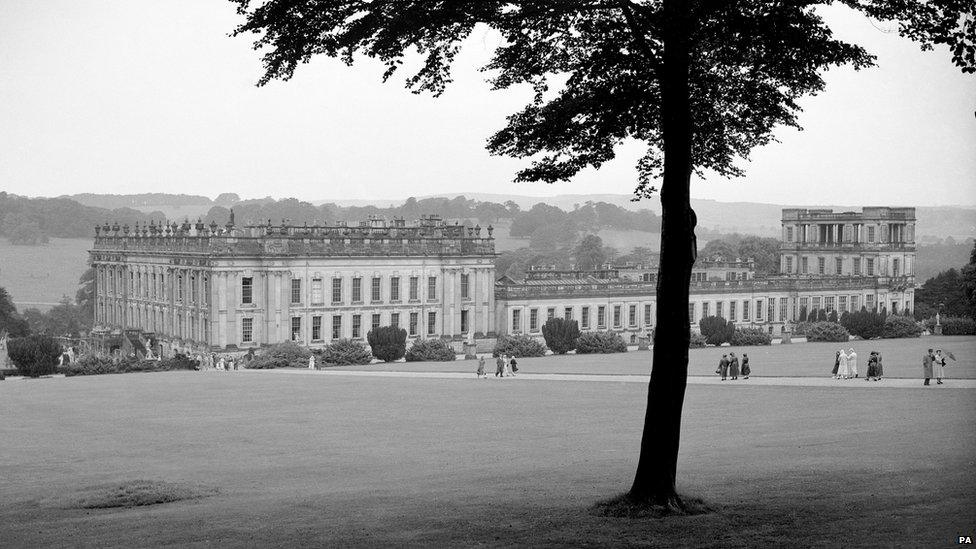
After World War Two, Chatsworth House was opened to the public and in 1957, when this picture was taken, the family decided to move in
In a 2010 interview she said: "It was a tremendous inheritance, if you like to put it that way, but it was also an enormous responsibility.
"But there was no question of us coming to live here [at Chatsworth] because there was this huge debt. And then slowly, slowly, slowly, it was resolved."
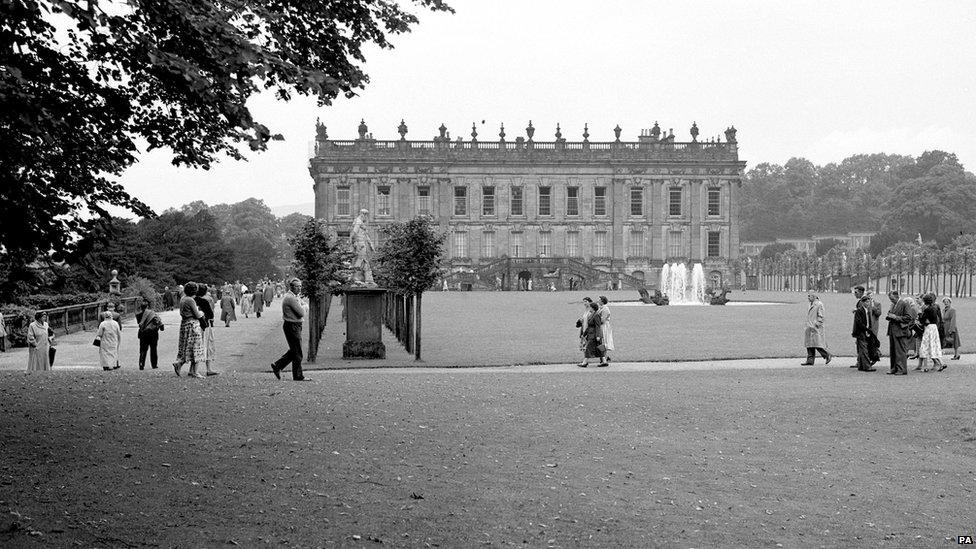
Chatsworth House was always open to the public but when the 11th Duke and Duchess of Devonshire took over in the 1950s its popularity soared
Works of art and ancient books were given to the Treasury, as was Hardwick Hall, now run by the National Trust, while thousands of acres of land were sold.
In 1957 the family decided to move in and the Duke and Duchess set about turning it into a successful business.
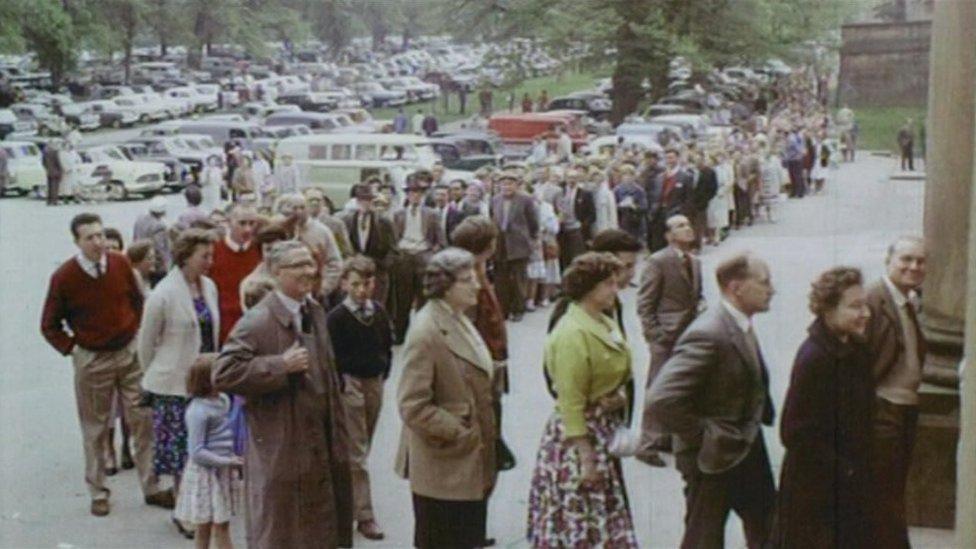
The success at Chatsworth House was emulated by other stately homes, including those run by the National Trust
By the 1960s and 70s, bus loads of tourists were visiting the house and gardens and in 1977 a farm shop selling local produce, one of the first of its kind, was opened.
Today more than 700 people are directly employed in the running of the estate and catering for more than a million annual visitors, as well as helping run the many events which bring more tourists.
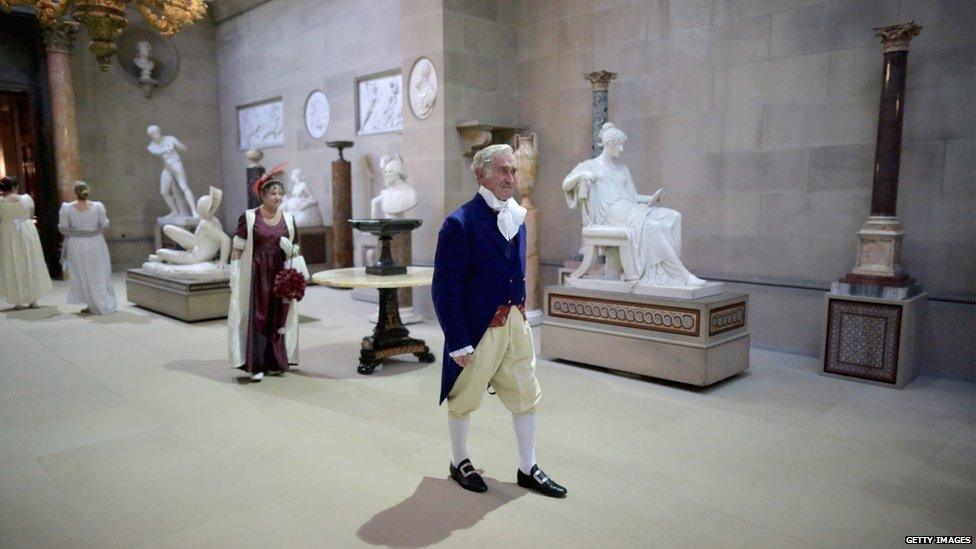
Chatsworth House is a popular venue, including for this Regency Ball to celebrate the 200th anniversary of Pride and Prejudice by Jane Austen, who is thought to have used the house as inspiration for Pemberley
Derbyshire historian Maxwell Craven said the Duchess had left a "terrific legacy".
"Putting Chatsworth bang on the middle of the map in a big way was a great achievement she made," he said.
"And keeping the family in it and making it a place people want to come to."
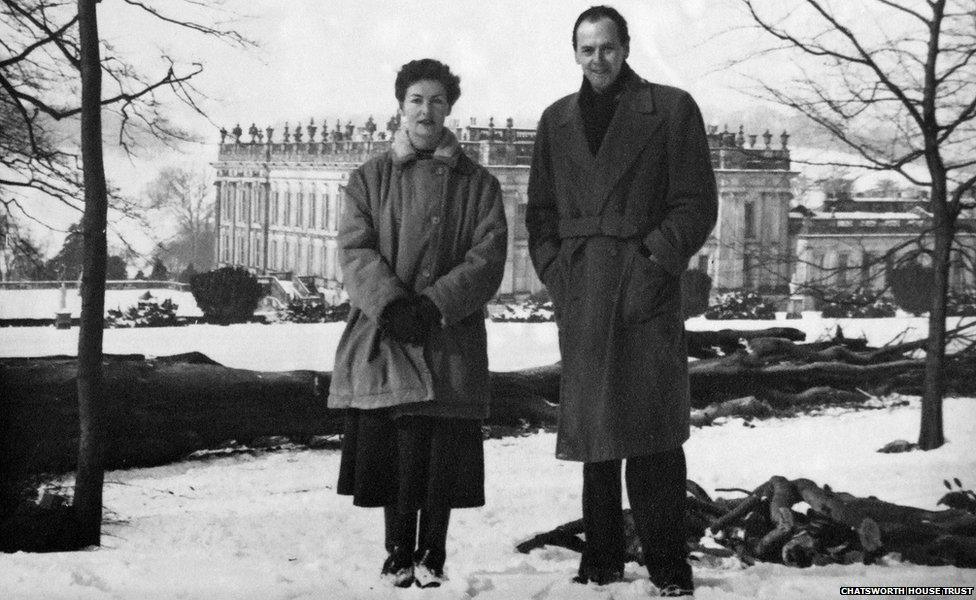
The 11th Duke and Duchess of Devonshire inherited Chatsworth House in 1950 but did not move the family in until 1957
- Published24 September 2014
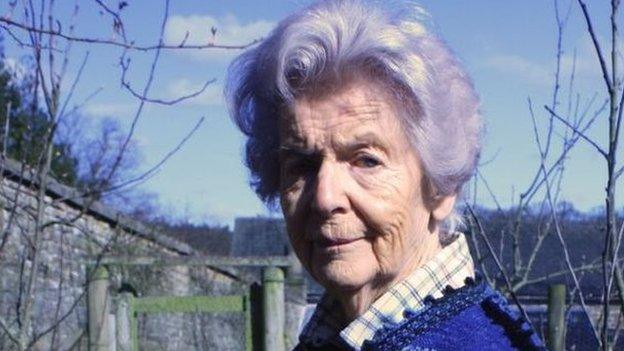
- Published24 September 2014
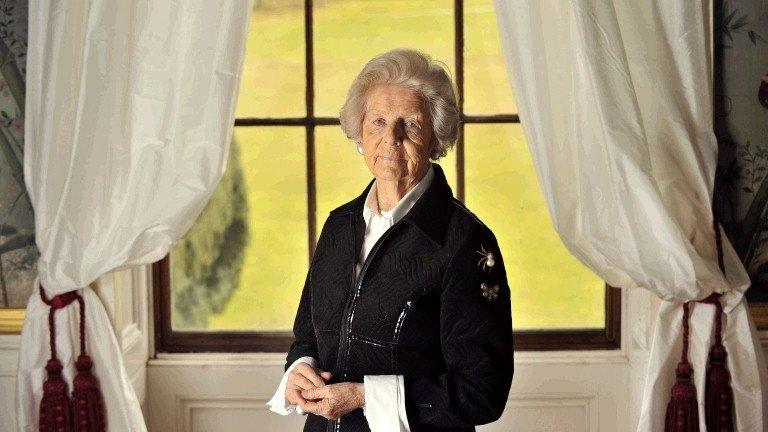
- Published24 September 2014
